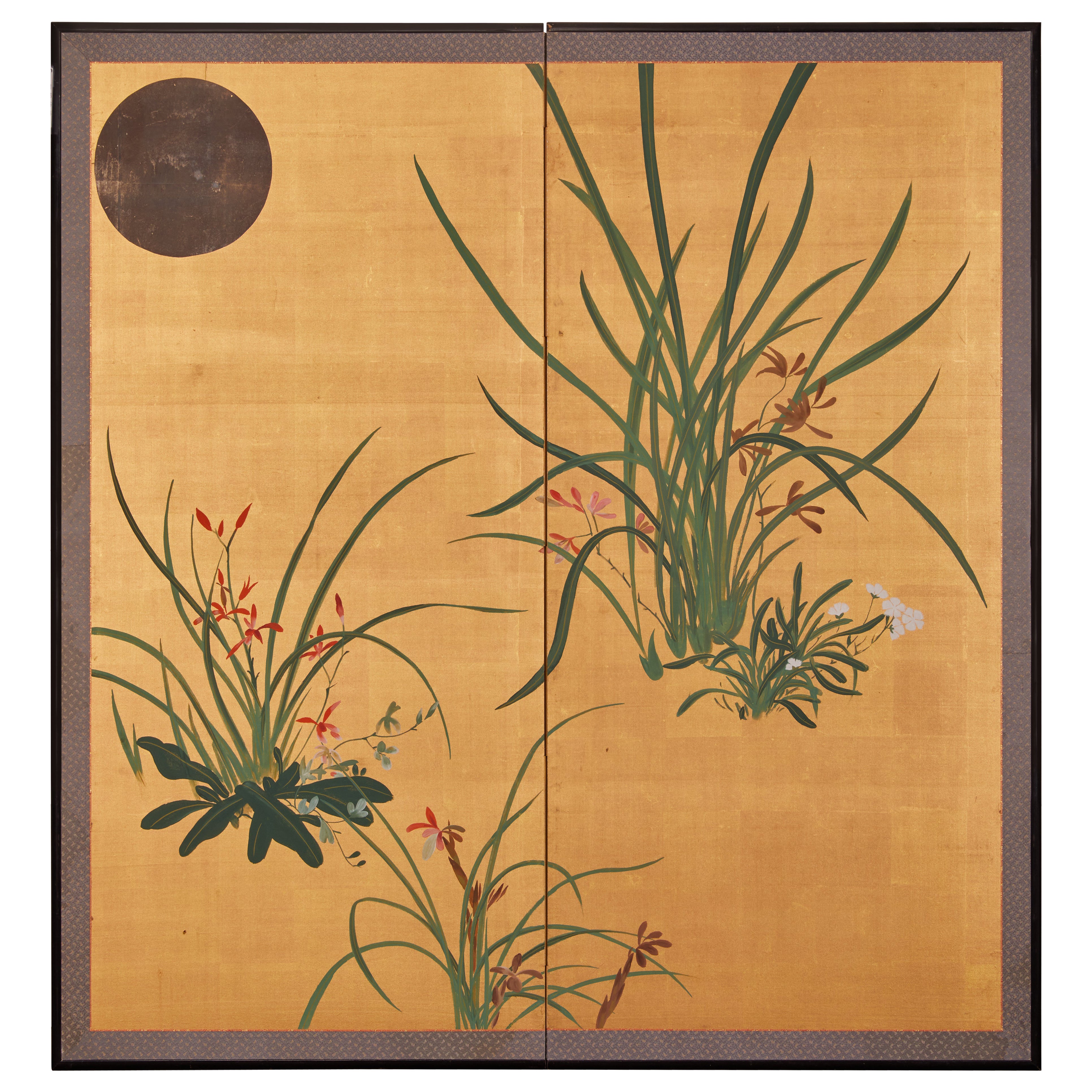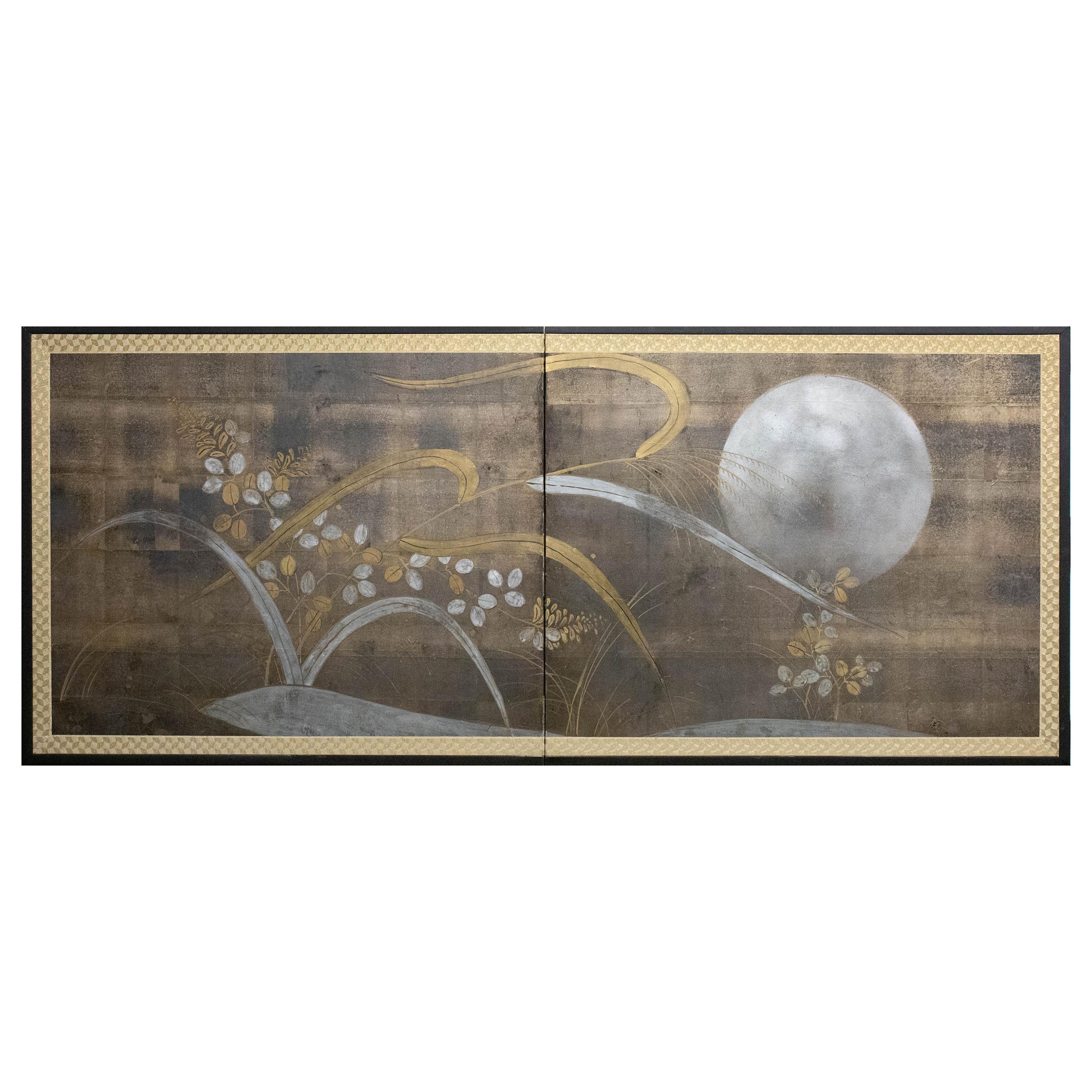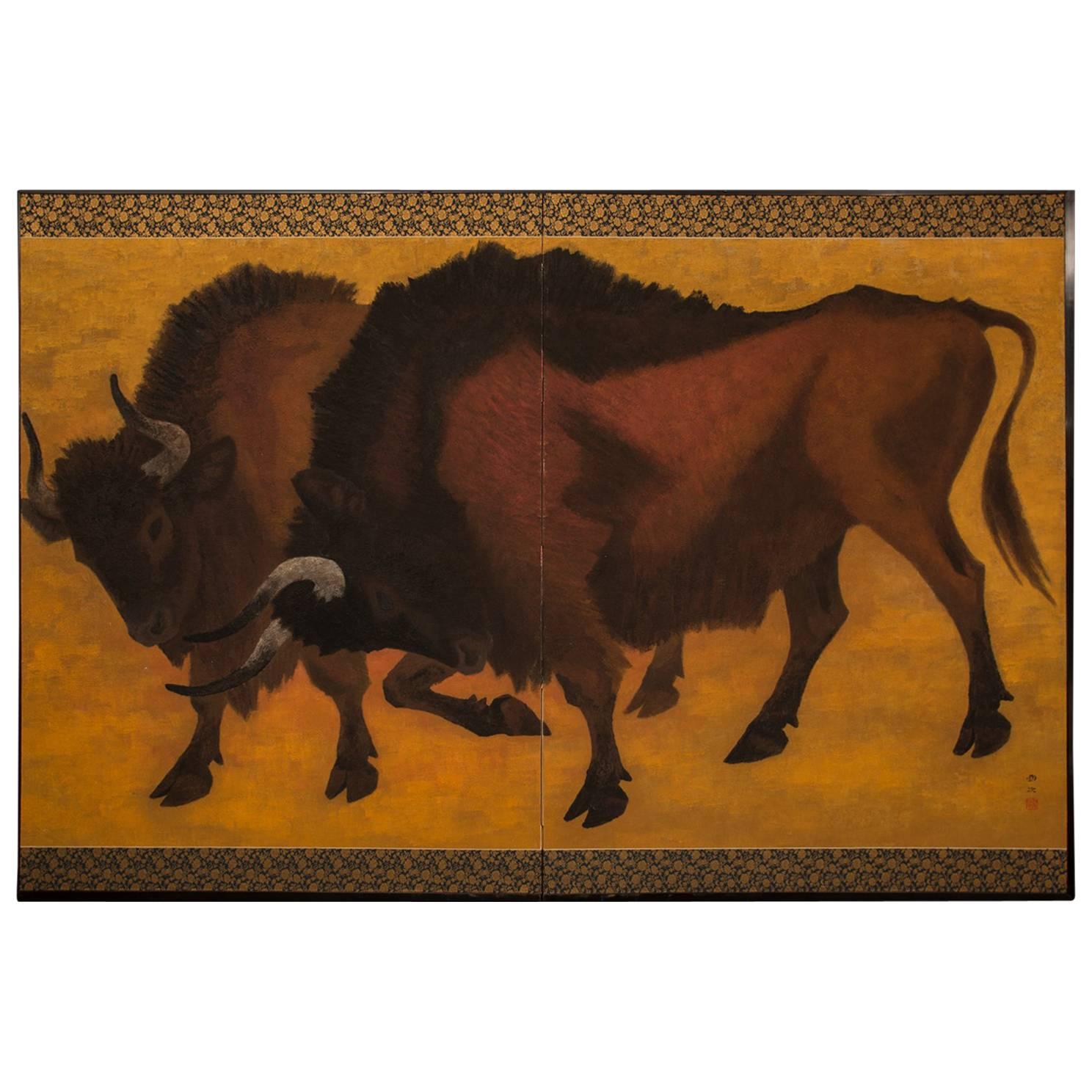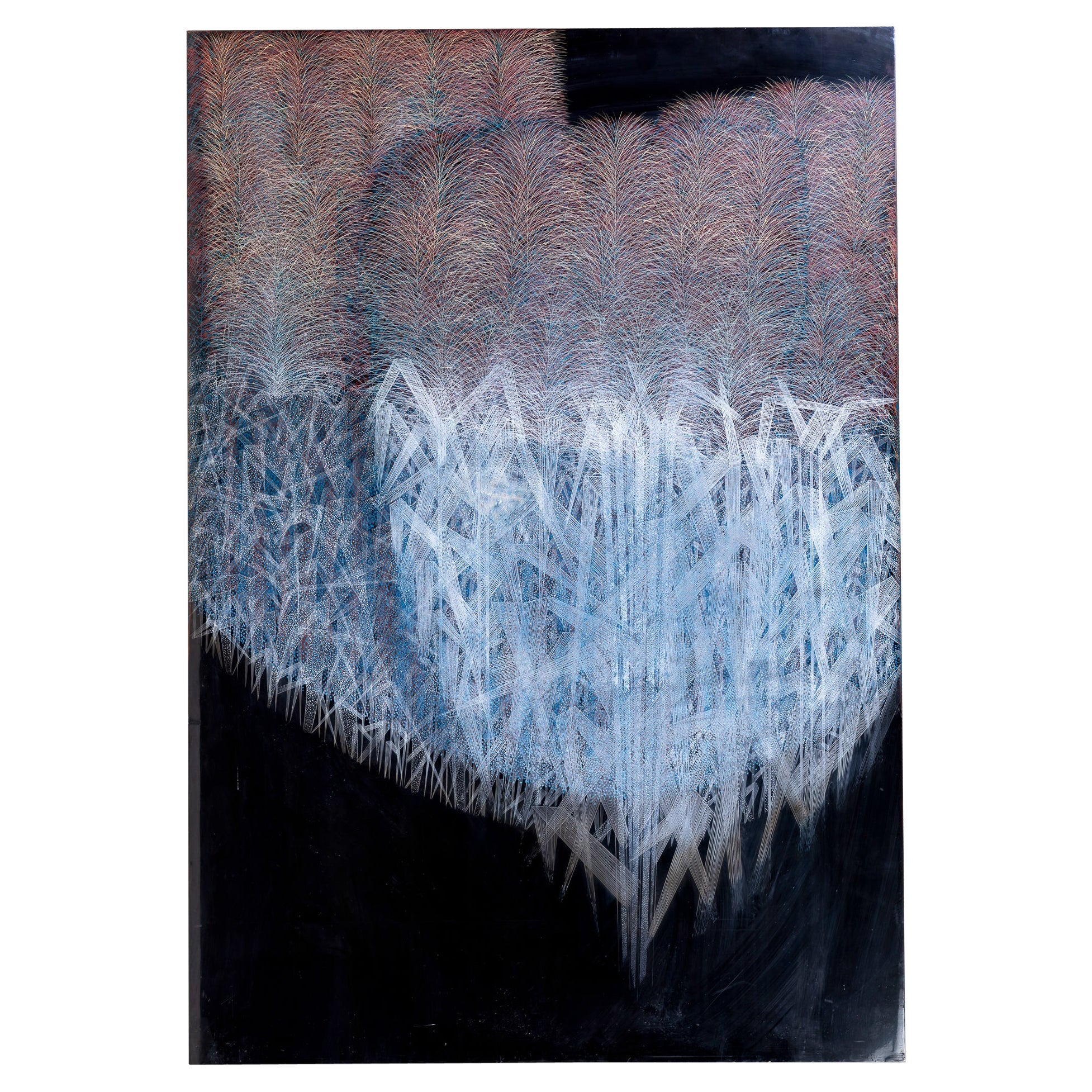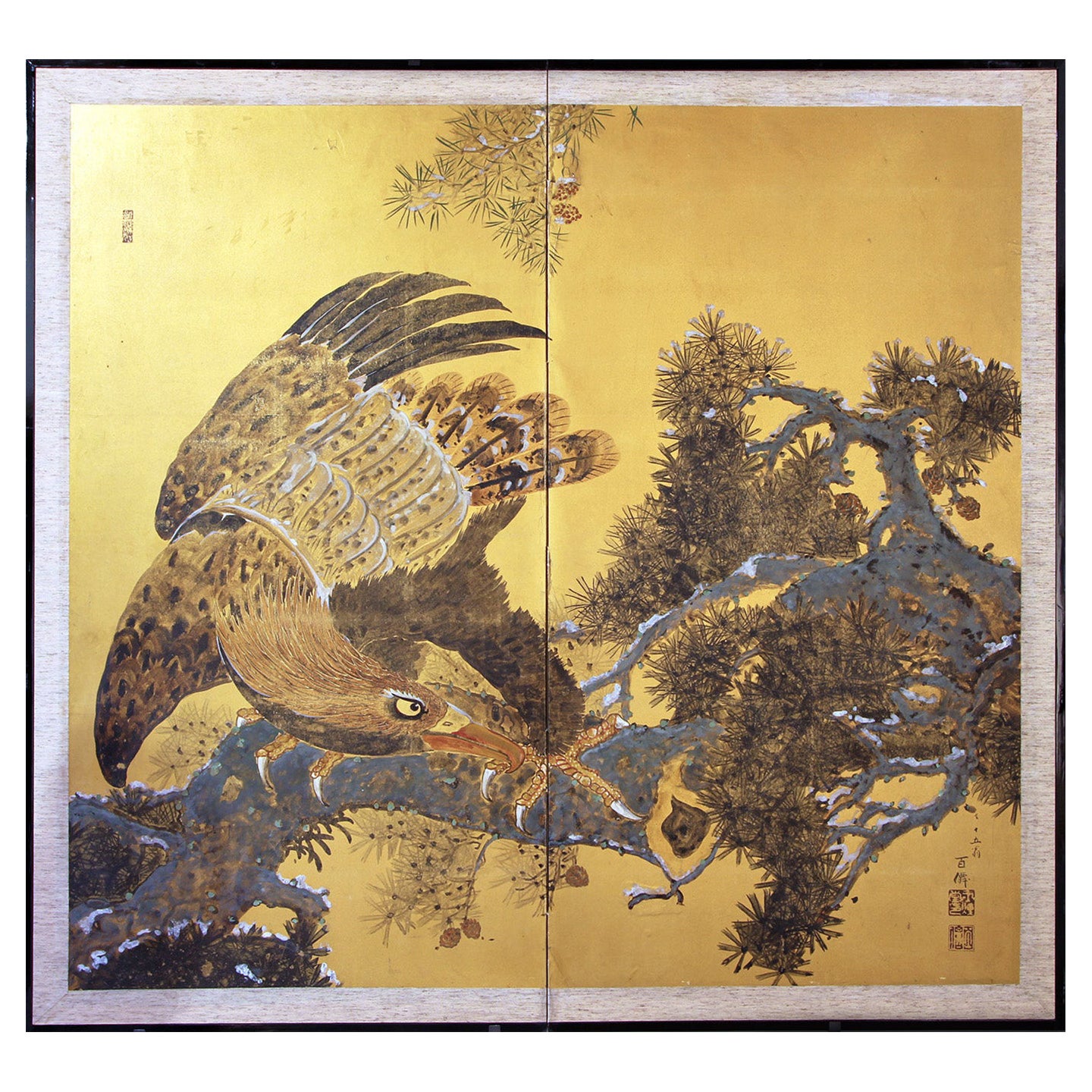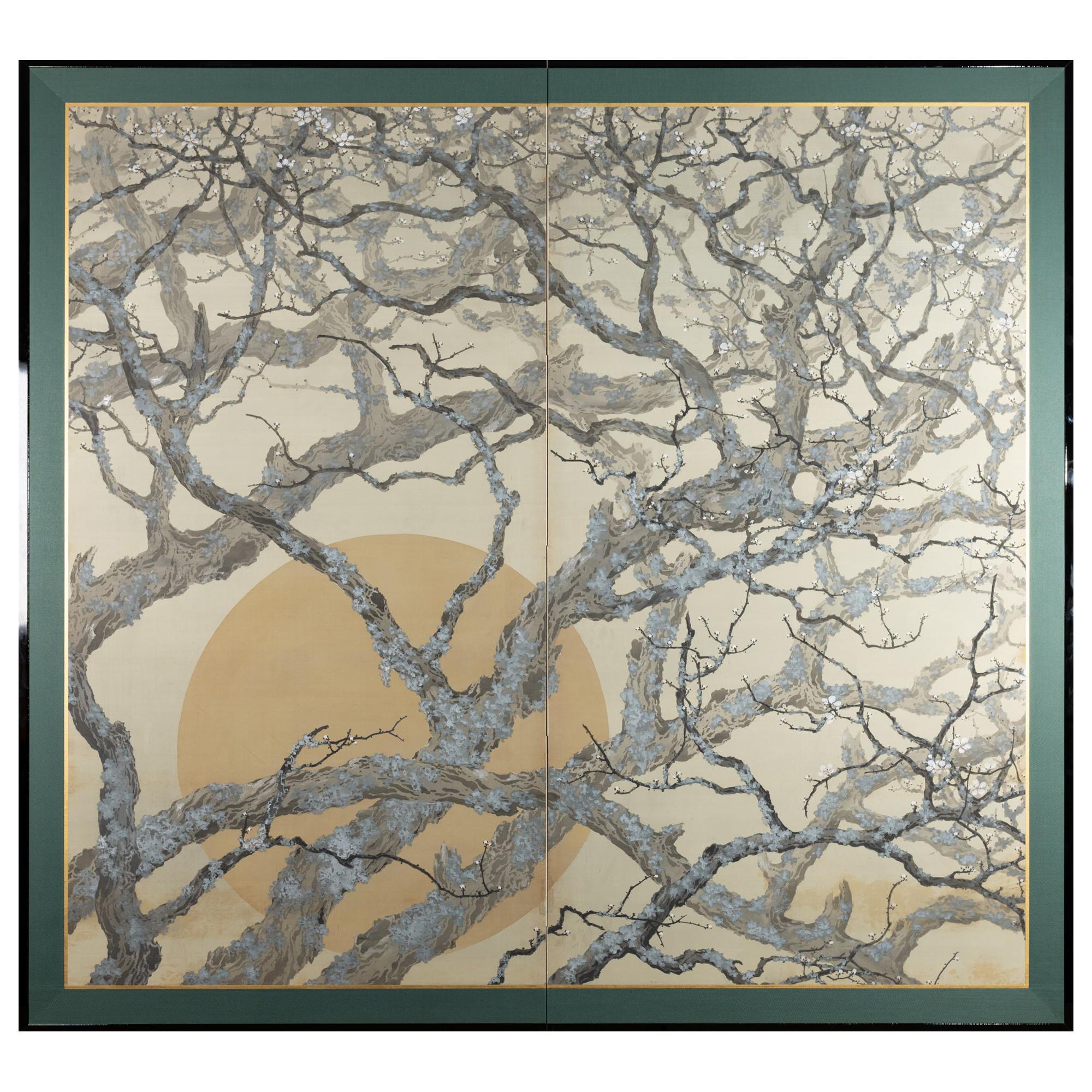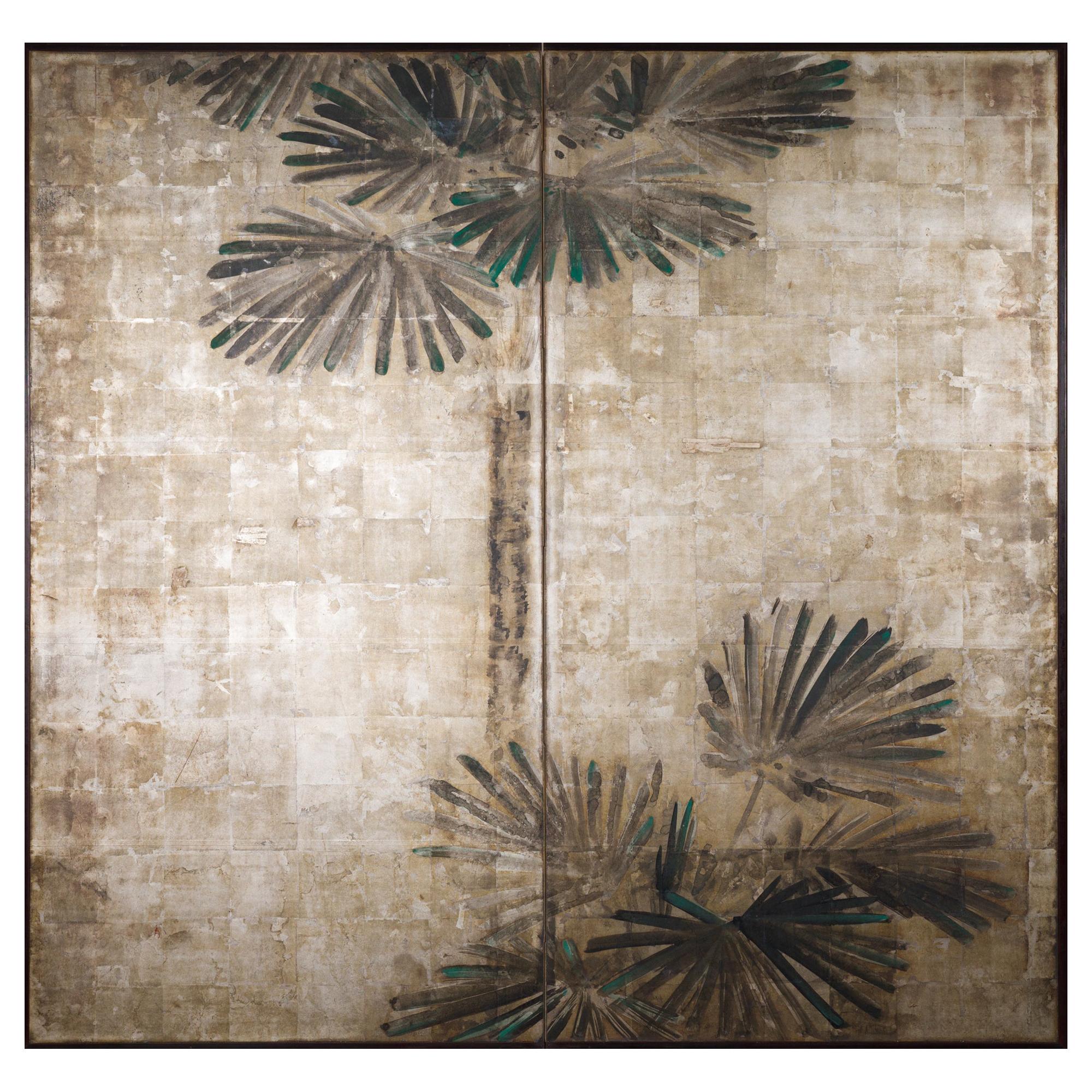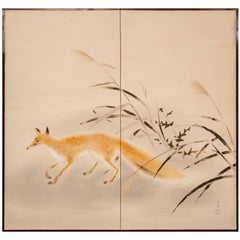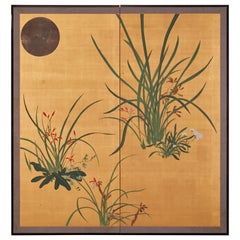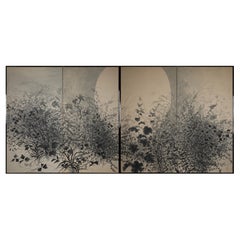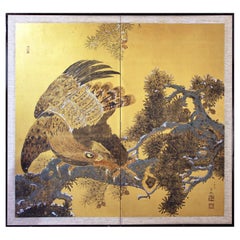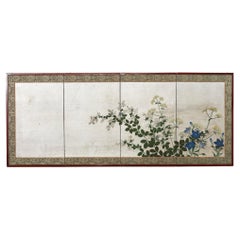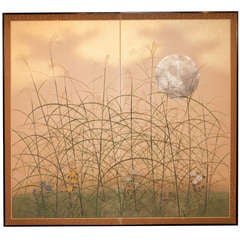
Japanese Two Panel Screen: Silver Moon and Wild Grasses
View Similar Items
Want more images or videos?
Request additional images or videos from the seller
1 of 3
Japanese Two Panel Screen: Silver Moon and Wild Grasses
About the Item
- Dimensions:Height: 68 in (172.72 cm)Width: 74.5 in (189.23 cm)Depth: 1.5 in (3.81 cm)
- Place of Origin:
- Period:
- Date of Manufacture:circa 1920
- Condition:Condition report upon request.
- Seller Location:Hudson, NY
- Reference Number:Seller: S14151stDibs: 1307168551836
About the Seller
5.0
Recognized Seller
These prestigious sellers are industry leaders and represent the highest echelon for item quality and design.
Established in 1971
1stDibs seller since 2008
150 sales on 1stDibs
Typical response time: 6 hours
Associations
The Art and Antique Dealers League of AmericaAntiques Associations Members
More From This SellerView All
- Japanese Two-Panel Screen, Red Fox and Thistle with Wild GrassLocated in Hudson, NYJapanese Two-Panel Screen, Red Fox and Thistle with Wild Grass In a winter landscape, by Kimoto Taika (1901-2001), signed and sealed, mineral pigments on mulberry paper.Category
Mid-20th Century Japanese Showa Paintings and Screens
MaterialsWood, Paper
- Japanese Two Panel Screen: Moon and FlowersLocated in Hudson, NYShowa period (1926 - 1989) painting with a strong design of exotic lilies and a cluster of nadeshiko (dianthus) under a silver moon on gold. This painting has a modern flair, which ...Category
20th Century Japanese Paintings and Screens
MaterialsSilver
- Pair of Japanese Two Panel Screens Moon Rising Through Autumn GrassesLocated in Hudson, NYInk with accents of gold on paper. By Kodama Sanrei (1915-2002) exhibited at the 1968 Nippu-ten. About the Artist: Kodama Sanrei was born in Nagano prefecture and studied under the a...Category
Early 20th Century Japanese Paintings and Screens
MaterialsPaper
- Japanese Two Panel Screen Moon ViewingLocated in Hudson, NYJapanese two panel screen: Moon Viewing, painting of two noblewomen admiring the full moon outdoors. Extremely sophisticated execution of painting ove...Category
Vintage 1970s Japanese Showa Paintings and Screens
MaterialsSilk, Wood, Paper
- Japanese Two-Panel Screen, Autumn Flower and Moon on SilverLocated in Hudson, NYMineral pigment painting on mulberry paper with silk brocade border.Category
Early 20th Century Japanese Paintings and Screens
MaterialsPaper
- Japanese Two-Panel Screen, Yagyu 'Wild Ox'Located in Hudson, NYPainted by artist Morito Kunitsugu, 1958, thick mineral pigments on textured mulberry paper. This was exhibited at the 1st newly reorganized Nitten National Exhibition in 1958, and ...Category
Mid-20th Century Japanese Paintings and Screens
MaterialsBrocade, Silk, Paper
You May Also Like
- Japanese screen two-panelBy Japanese StudioLocated in Brescia, ITEagle on a pine branch with traces of white snow. A rare subject for this mid-century two-panel screen, painted in mineral pigments on gilded paper. The screen is a nice size and is ...Category
20th Century Japanese Showa Paintings and Screens
MaterialsPaper
- Japanese Meiji Four Panel Screen Flowering Grasses of AutumnLocated in Rio Vista, CARemarkable late 19th century Meiji period Japanese four panel byobu screen featuring the flowering grasses of autumn: Chinese bellflower, bush clover, and ominaeshi (Patrinia Scabios...Category
Antique 19th Century Japanese Meiji Paintings and Screens
MaterialsSilver Leaf
- Japanese Edo Period Two-Panel ScreenLocated in Stamford, CTA Japanese Edo Period two panel folding screen with white and brown hawks of ink and color on paper.Category
Antique Mid-19th Century Japanese Edo Paintings and Screens
MaterialsPaper
- Japanese Meiji Period Two Panel ScreenLocated in Stamford, CTJapanese Meiji Period (1868-1912) two-panel painted screen with various Tale of Genji scenes - ink, colors and gold leaf on paper.Category
Antique 1870s Japanese Paintings and Screens
MaterialsPaper
- Japanese Six-Panel Screen Byobu With Chrysanthemums And Autumn Grass and FlowerLocated in Torino, ITThe 19th Century Six-Panel Japanese folding screen "Byōbu" usually used in the most important Japanese house to stop wind and also to separate different space of the same big room de...Category
Antique Mid-19th Century Japanese Edo Paintings and Screens
MaterialsGold Leaf
- Japanese Meiji Two Panel Screen Geese and ReedsLocated in Rio Vista, CAFantastic Japanese late Meiji period two-panel byobu screen by Hashimoto Koshu. The large screen features two white geese amid brightly colored reeds. The symbolism of geese and reeds was introduced to Japan from China in the 13th century. This was a popular subject for Japanese zen artists of the period. Beautifully crafted with exceptional brush strokes and details. Made with natural pigments in dramatic vivid colors of white, pink, and mint green on a silk background of gilt. Circa 1900 with artist seal on bottom right corner. Koshu studied Western art under...Category
20th Century Japanese Meiji Paintings and Screens
MaterialsSilk, Wood, Paper
Recently Viewed
View AllMore Ways To Browse
Japanese Screen Moon
Plain Gold Screen
Japanese Meiji Panel
Crane China
Chinese Crane
Two Panel Japanese Screen
Antique Hand Carved Screen
Japan Folding Screens
Japanese Folding Screen Screen
Antique Silk Brocade
Reverse Painted Chinese
Antique Japanese Silk Paintings
Antique Japanese Silk Painting
Japanese Hand Scroll
Asian Bird Paintings
Japanese Antique Silk Painting
Chinese Reverse Painting
Chineses Gold Panel

